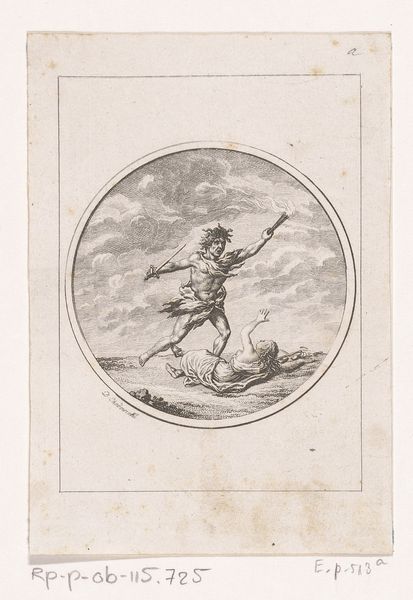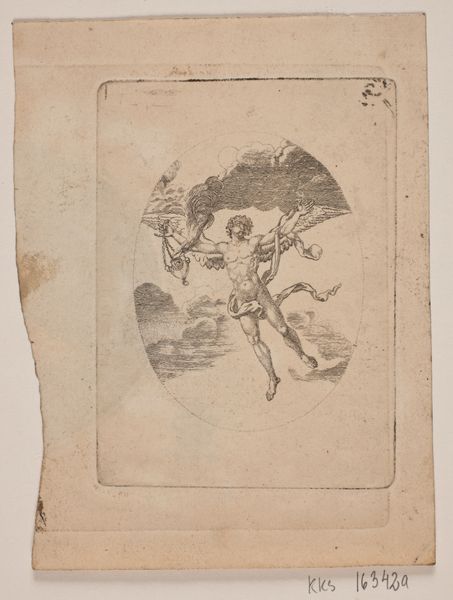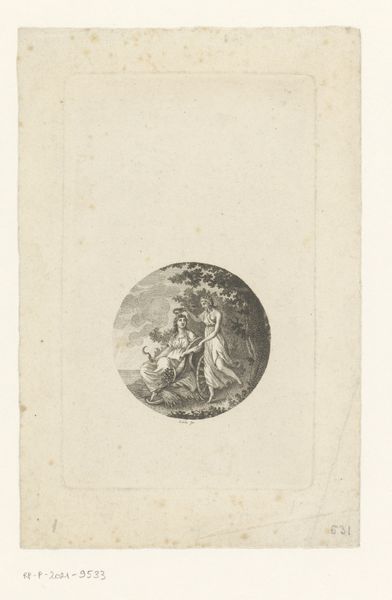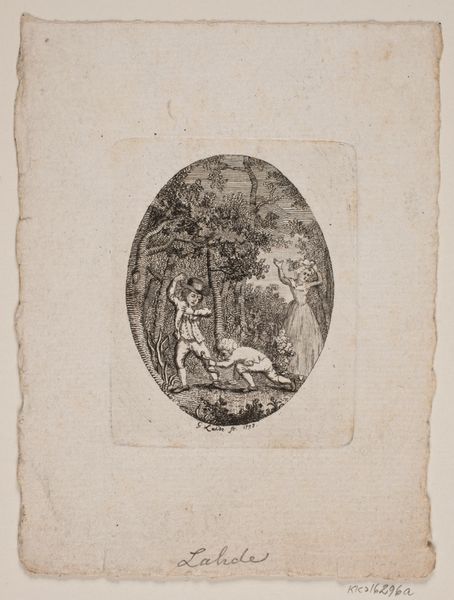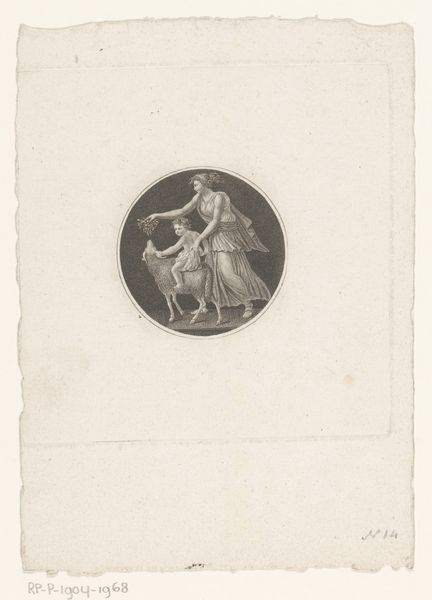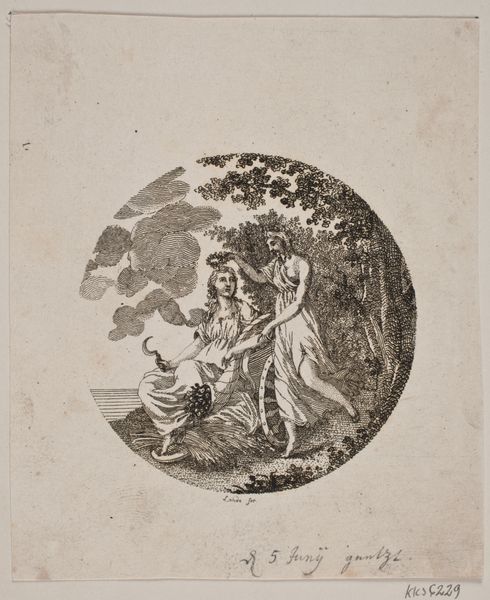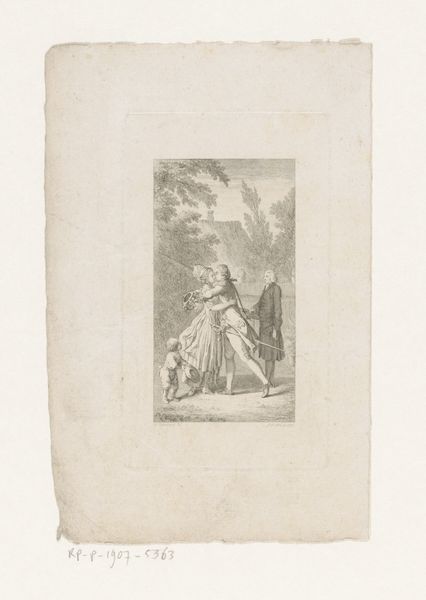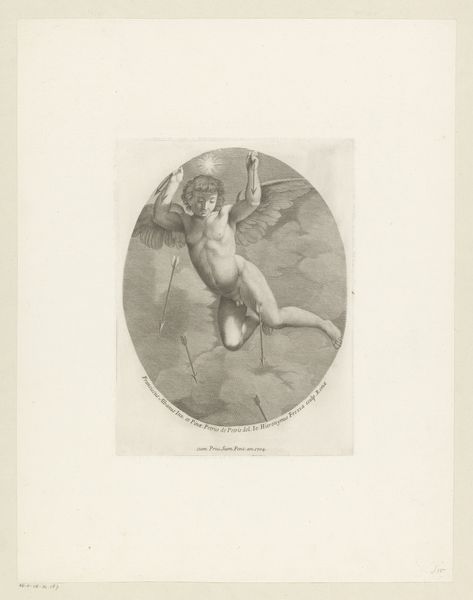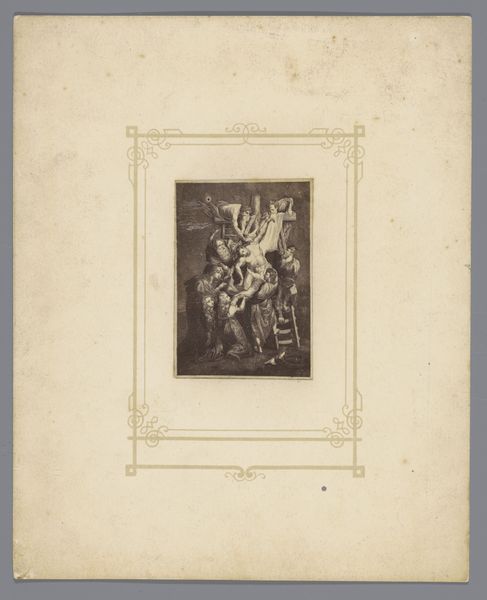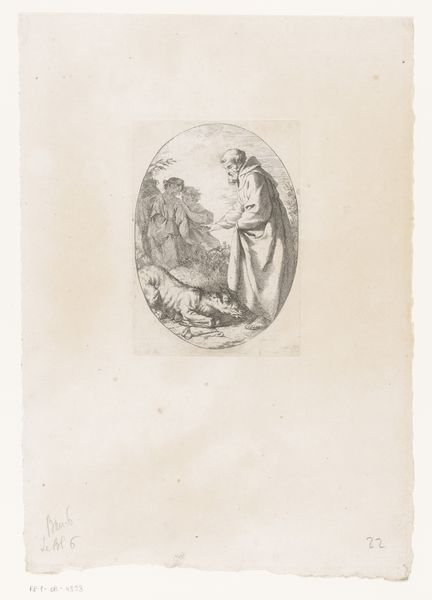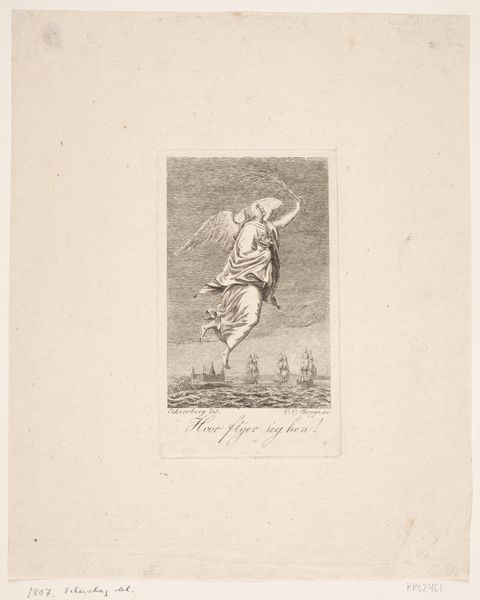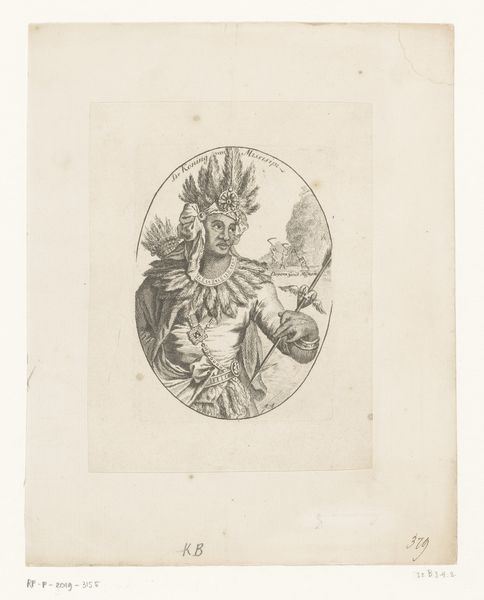
print, engraving
# print
#
landscape
#
figuration
#
romanticism
#
engraving
Dimensions: 88 mm (height) x 63 mm (width) (plademaal)
Curator: This is "Svævende engel," or "Floating Angel," an engraving by Gerhard Ludvig Lahde, created sometime between 1765 and 1833. Editor: The figure seems oddly tense, given the implied lightness of the title. And is that smoke billowing in from the upper-left? I’d venture a guess about this work being in an unfinished state based on the overall image density, with areas showing visible gridlines, perhaps meant for further refinement. Curator: That tension you're noticing, it resonates. Angels weren’t simply saccharine beings in this period. They embodied power, judgment. Notice the sunburst above—divine light. The floating figure carries potent cultural weight as an established romantic theme, particularly when mediated through print media. Editor: But consider the engraving process itself. The labor! The deliberate mark-making required to render these soft clouds, this idealized human form…there's an inherent contradiction, a tension between the spiritual subject matter and the intensely material process of production. And speaking of idealized, look at the proportions. Very deliberately rendered. Curator: It’s Lahde utilizing accessible imagery to tap into deeper societal veins. This would be distributed widely; what narrative were audiences reading into this figure as it circulated? Was this an image of solace? Perhaps a memento mori reminding viewers of death and spirituality in alignment with the landscape and religious themes favored during the Romantic period? Editor: Or maybe it's reflecting social aspirations. These printed images served a very crucial purpose in Romantic-era culture, providing many audiences with ways to visually interpret and ultimately realize themselves by the very material culture around them. These widely consumed images had to balance very delicate economies of attention, and one way to solve this problem would be a strong focal point such as this floating, ethereal body. Curator: Precisely, each choice in production had very real, intended outcomes that factored back into consumer reception. A testament to material's agency. Editor: Ultimately, both religious iconographies and material considerations seem to converge and point to how this piece really embodies many nuances present in the 18th and 19th centuries' social and material lives.
Comments
No comments
Be the first to comment and join the conversation on the ultimate creative platform.
